Go tell all your friends! The Kombucha is ready at long last!!
My humongous container, which has been sitting on the countertop filled with, to the untrained eye, a questionable brown liquid, confusing my house guests is READY!!
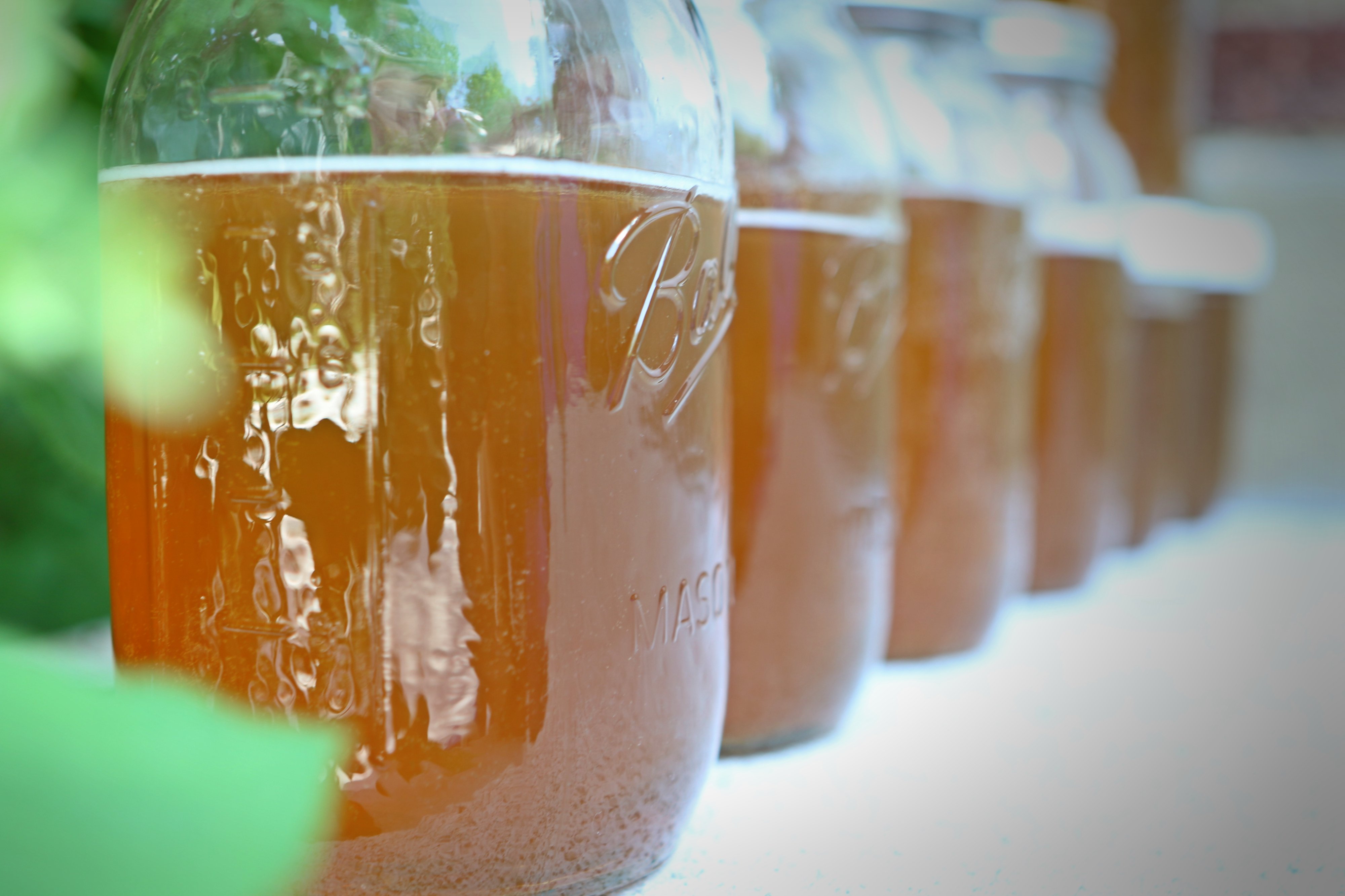
After 4 long weeks, this batch of kombucha has reached the peak of it's tart and refreshing perfection.
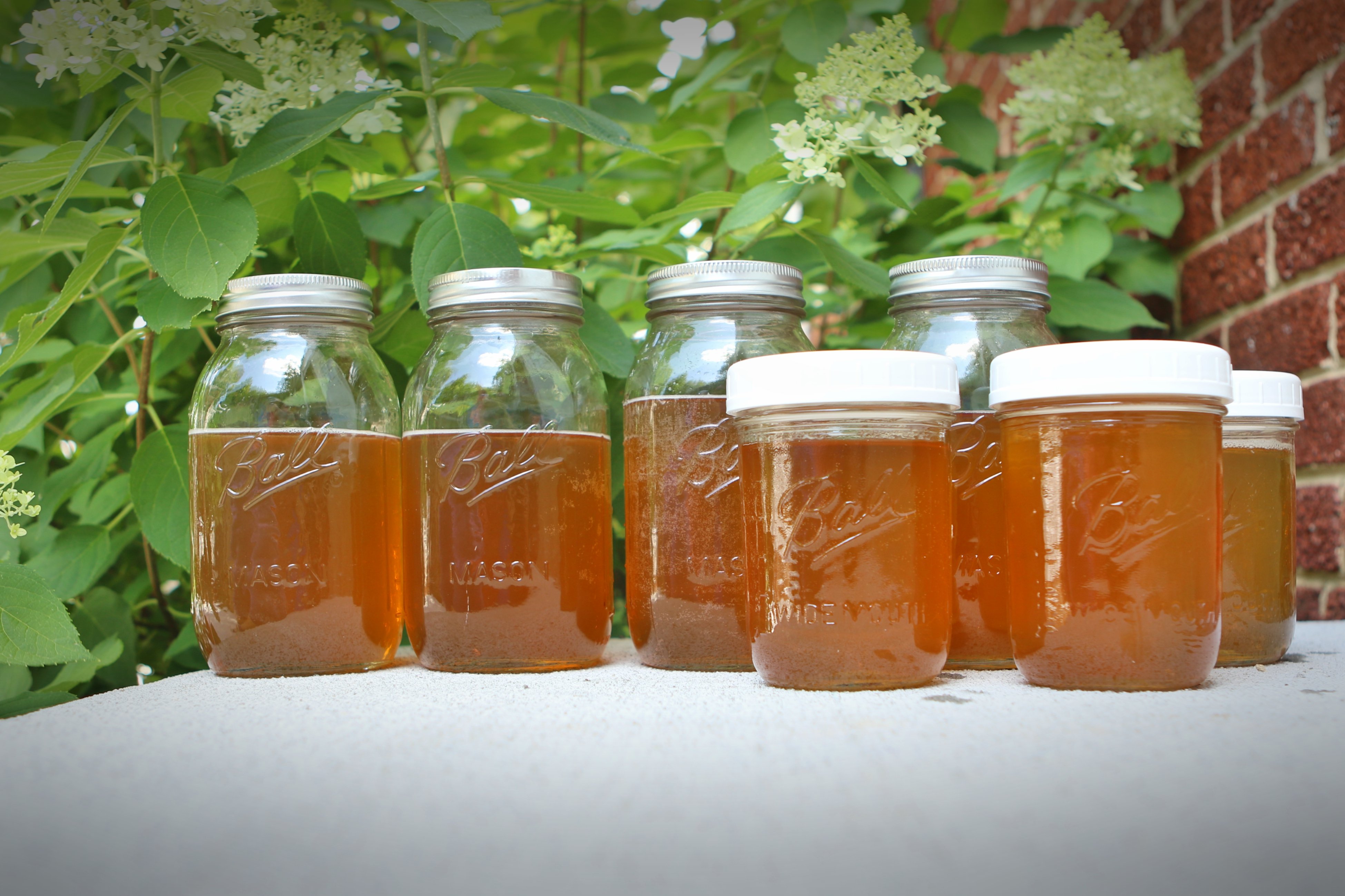
So what is that questionable liquid anyway?
Let's recall a little grammar school exercise of 'analogous pairs'.
Complete the analogous pair:
Water:Liquid :: Television : ???
a. Electricity
b. Appliance
c. Horse
d. Netflix
If you guessed b., then you, my friend are a genius!
Water IS TO Liquid AS Television IS TO Appliance
(Water is a type of liquid, and a television is a type of appliance).
Let's try one more:
Horse: Foal :: Duck : ???
a. Pond
b. Chicken
c. Foie Gras
d. Duckling
If you guessed d., then stop reading right now and go audition for Jeopardy.
Horse IS TO Foal AS Duck IS TO Duckling
If you didn't get either of these correct, just stop trying, I wouldn't want you to hurt yourself. Kidding!!
And here's where we learn about Kombucha:
Kombucha : Sweet Tea :: Yogurt : Milk
Kombucha : Sweet Tea :: Sauerkraut : Cabbage
Kombucha : Sweet Tea :: Sourdough : Flour
Kombucha : Sweet Tea :: Beer: Hops
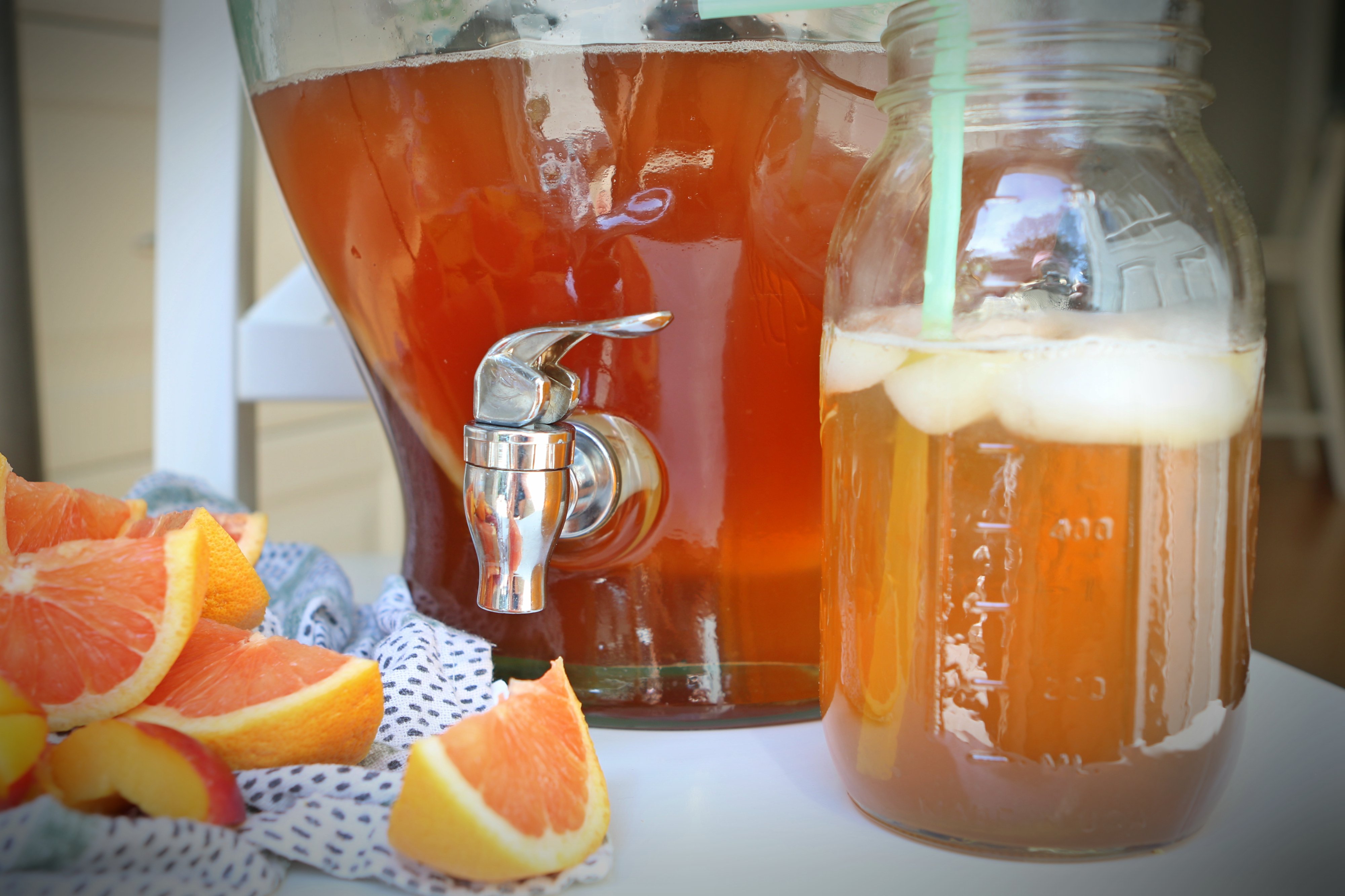
Kombucha is simply fermented sweet tea, like yogurt is fermented milk, sauerkraut is fermented cabbage, and sourdough is fermented flour.
It's actually a bit more complicated than that, since the fermentation really involves the sugars present in the starter foods, but we don't need to split hairs here.
In the process of fermentation, yeast or bacteria, or a combination of the two, hungrily devour the sugars in the milk, cabbage, flour, or sweet tea. And just like you and me, we consume our food and we also produce waste. It just so happens that the waste produced by the yeast and bacteria in these cultured foods produces the tangy and cultured flavors and health benefits that we love in fermented foods. A few months back, @lily-da-vine covered loads of information about kombucha and its health benefits. I'd highly recommend checking out her series of posts. Start here.
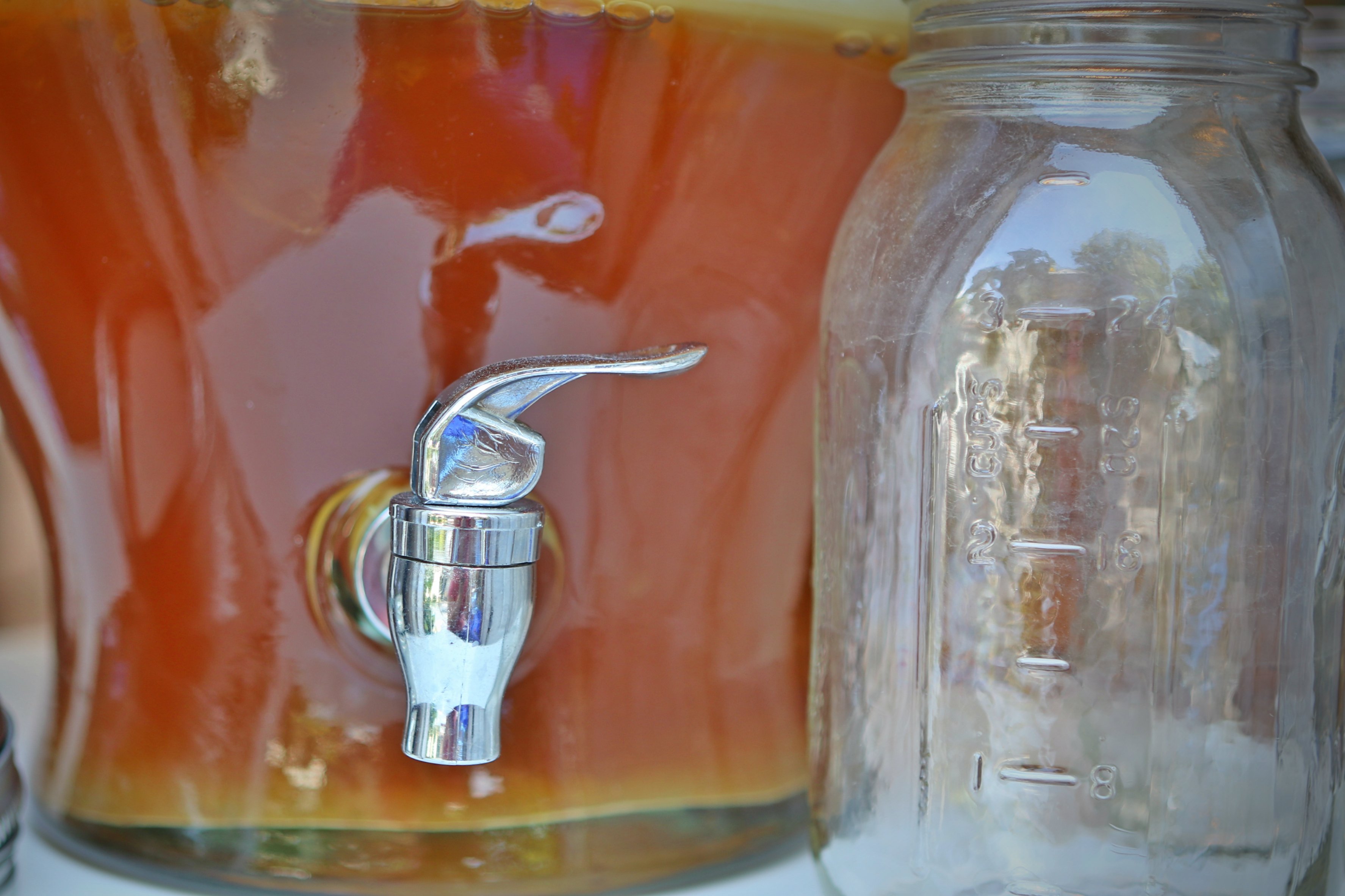
Fermented foods have been produced and consumed for centuries, dating back to as early as 6000 B.C.
Essentially every culture and civilization known in the history of mankind has produced and consumed fermented foods and beverages as part of their diets.
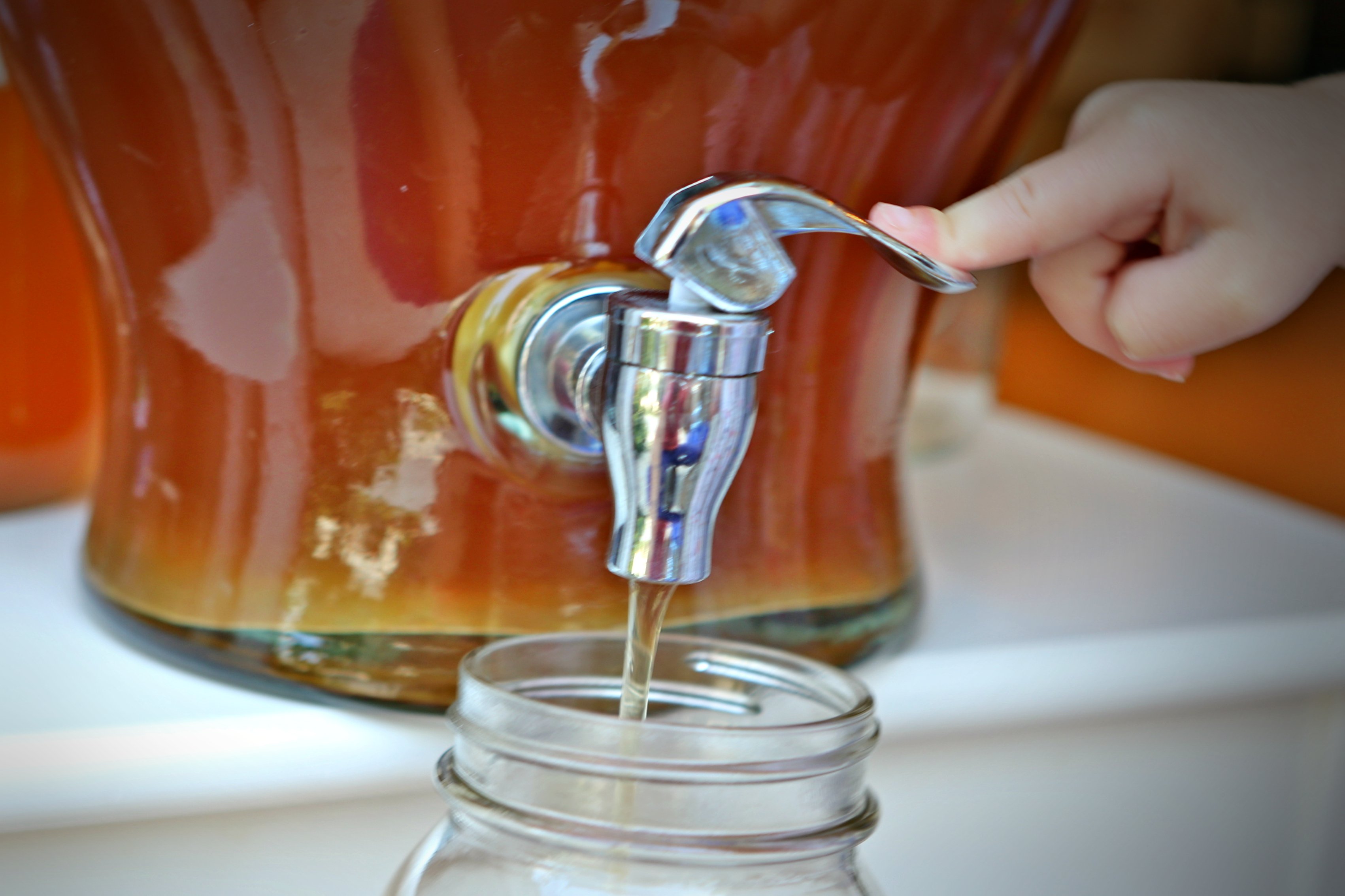
I get by with a little help from my little friends.
Through the process of fermentation, the simple sweet tea turns into kombucha and contains b-vitamins, probiotics, enzymes, and acids that aid in increasing energy levels, improving digestion, and easing joint pain, among many other health benefits.
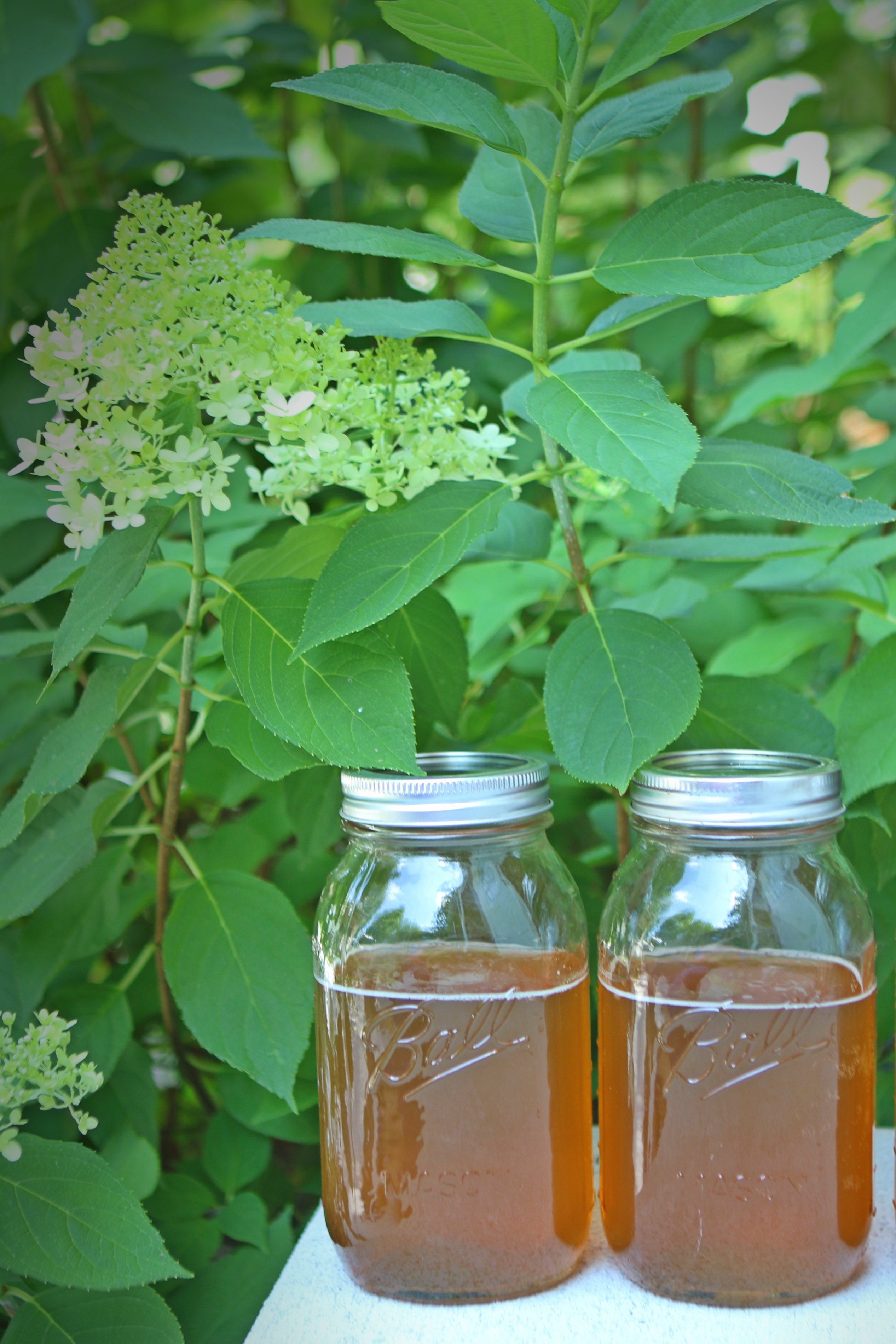
Kombucha is one of my favorites when it comes to fermented beverages.
To make kombucha, you need brewed tea, sugar, and bacteria and yeast to do the fermenting. In Kombucha terms, the bacteria and yeast live together in a SCOBY. The SCOBY (Symbiotic Culture Of Bacteria and Yeast). After a good warm few weeks, the SCOBY ferments the sugar in the tea and you have kombucha, fermented tea!

The big batch of steamy sweet tea.
But I don't have a SCOBY!
Not to worry - all you need is to buy a bottle of kombucha from the store to start you off. The bacteria and yeast that is already living inside the store-bought bottle of kombucha is enough to colonize and form a SCOBY. Once you've got your SCOBY for the first time, you can use it again and again to brew an endless amount of kombucha, batch after delicious batch.
To start this batch, I poured half a bottle of G.T. Dave's Original Kombucha into a quart-sized mason jar. I brewed two cups of tea with 2 teabags, added 6 tablespoons of sugar, allowed the sweet tea to cool, and added it to the store-bought kombucha in a quart-sized mason jar. I covered the jar with the lid but did not close it all the way, to prevent dust from getting in the jar, and set it on a warm spot in my kitchen.
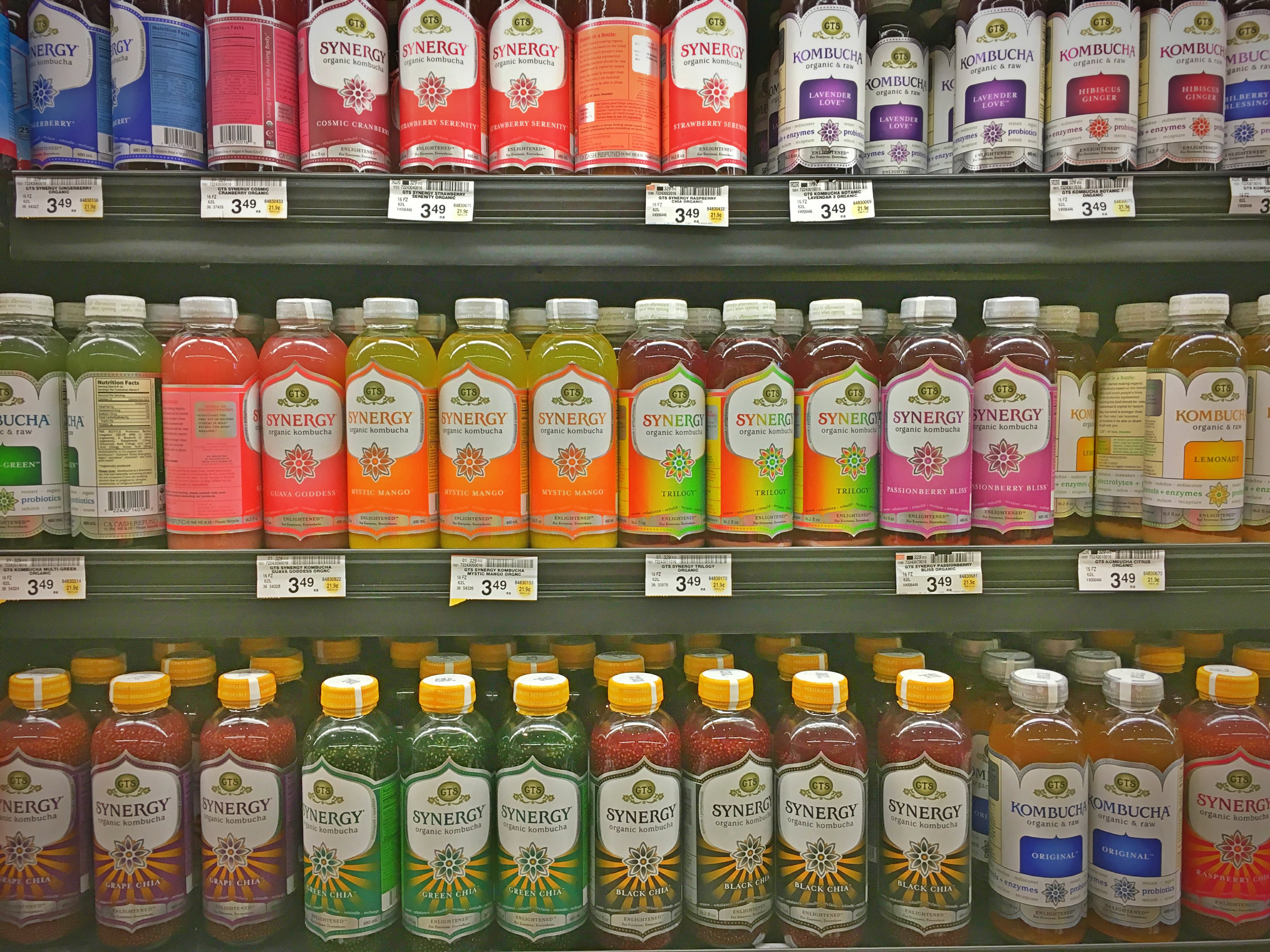
Why pay $3.50 when you can make your own for $0.17?
Before I knew it, there was a cute round disc floating on the top of my mason jar, a little SCOBY ready for action. Upon tasting the contents of the jar every couple of days, it was finally tart an bit vinegary after about 3 weeks.
This SCOBY was ready to be used to make a big batch of kombucha.
To scale up, because a quart of kombucha won't last anyone very long, I dumped the entire contents of my quart sized jar into a 2-gallon drink dispenser. Any large vessel made of glass, ceramic, or stainless steel will work! I brewed a gallon of sweet tea using 8 tea bags and 1 cup of sugar. After the tea cooled to room temperature, I added it to the 2 gallon drink dispenser to join the little SCOBY and starter kombucha from the quart-sized mason jar. Covered with a kitchen towel and a rubber band to ward of hungry fruit flies and dust, this batch began to brew.
And about 4 weeks later, I'm pleased to announce that the kombucha was finally ready to be bottled! I poured all but about 1-2 cups of the kombucha into mason jars, added a tiny pinch of sugar, and sealed them up. Adding a pinch of sugar and sealing the jars at room temperature allows for a brief secondary fermentation. This secondary fermentation step gives kombucha that effervescent fizziness that makes you happy. After 2-3 days on the countertop, into the refrigerator they go, ready to drink whenever you are.
The leftover 1-2 cups of kombucha, along with the SCOBY, in the 2 gallon drink dispenser will be used as the starter to make the next batch of kombucha!
The SCOBY is the gift that keeps on giving.
Kombucha is just perfect without anything added but ice and a straw, but if you're feeling fancy you can add juices, extracts, or fruit to your jars.
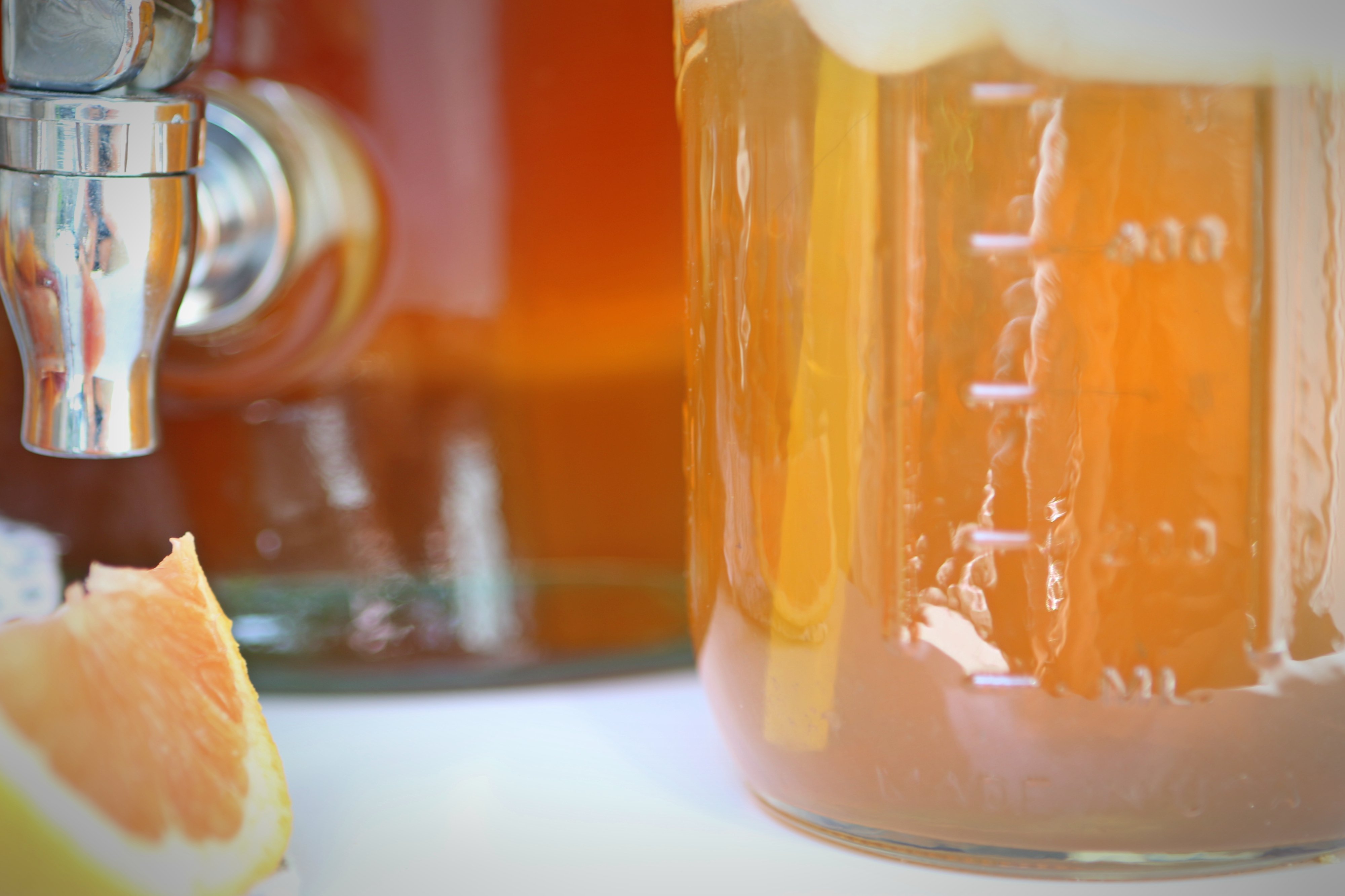
I made a little summer fruit puree that I have been adding to this kombucha and it kicks it up to a whole new level. To make the puree, I blended up a few cubes of watermelon, the flesh of a small grapefruit, and two cute little nectarines. I strained the puree for smoothness, and I've been adding it to my kombucha for a fruity summer drink. What are your favorite flavors and recipes? I would love to try some new ideas!
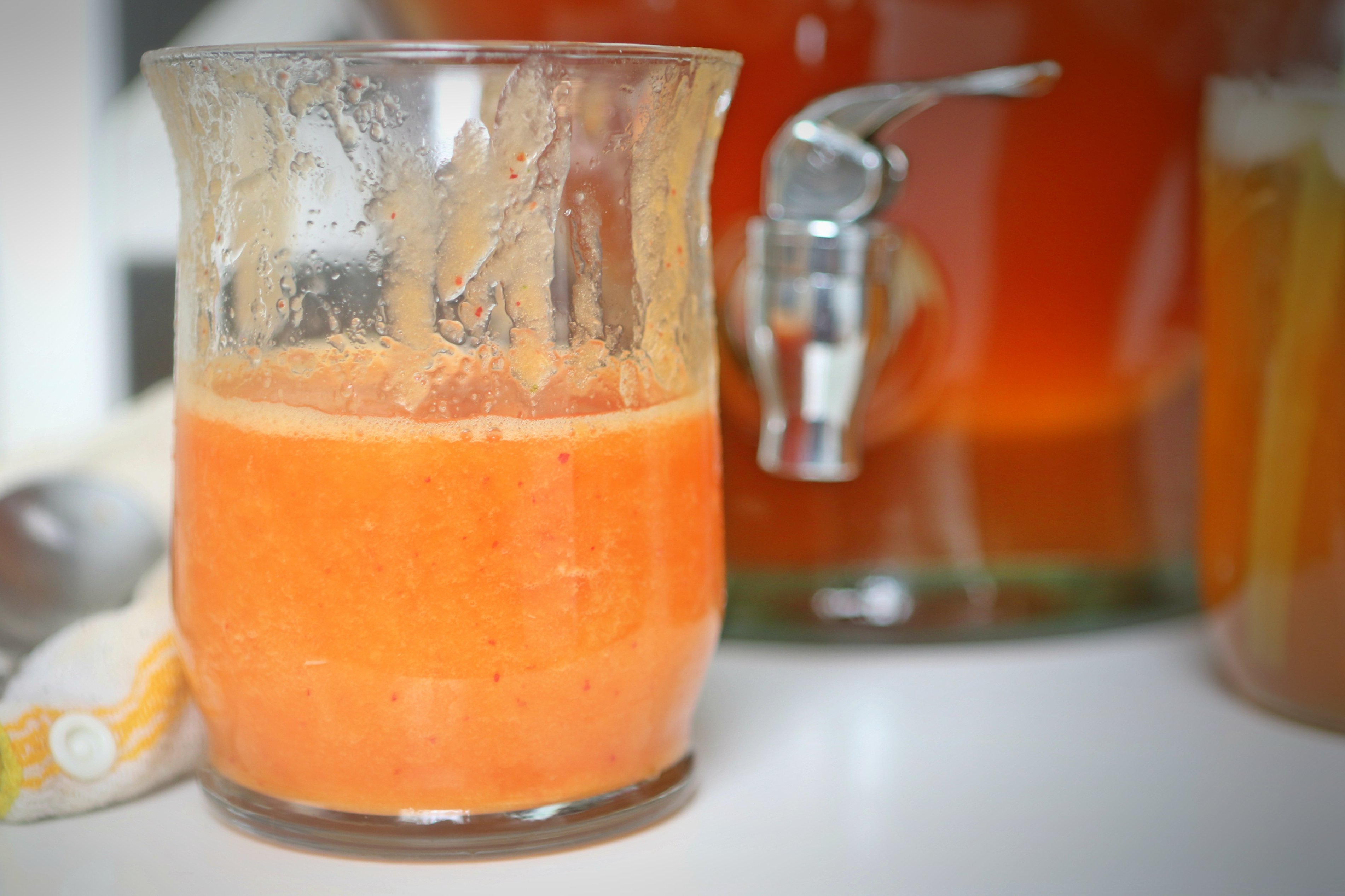
Mix some fruit puree into the kombucha for a summer flavor boost!
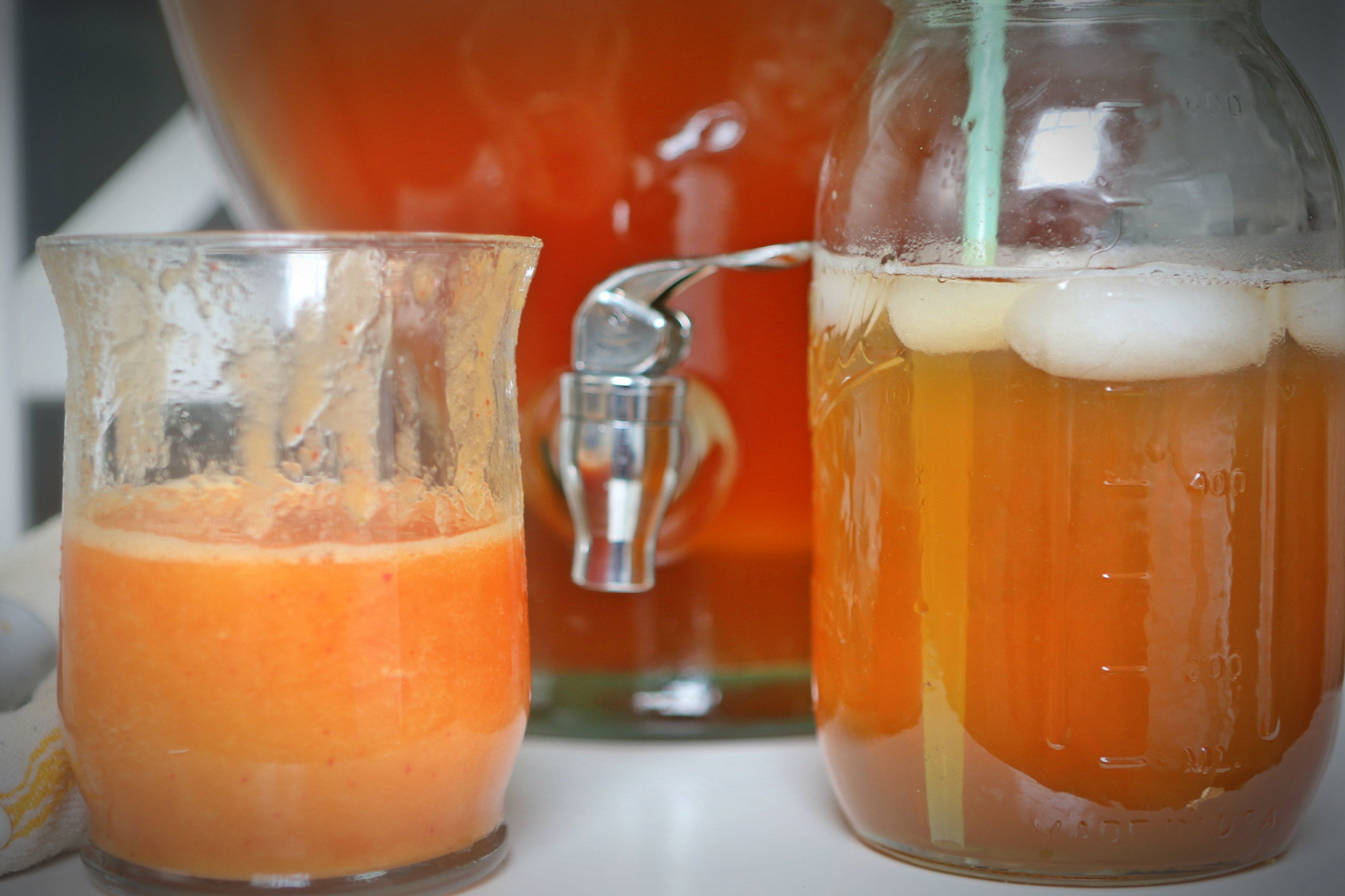
A bottle of G.T. Dave's Kombucha runs about $3.50 at retail, for a 500ml bottle. 100 black tea bags costs $3.69 at my local Target, while 4 cups of organic sugar is $3.99. Doing some back of the envelope math, and for a whopping 17 cents, you can make your own kombucha that would cost you $3.50 for the same amount if you bought it at the store.
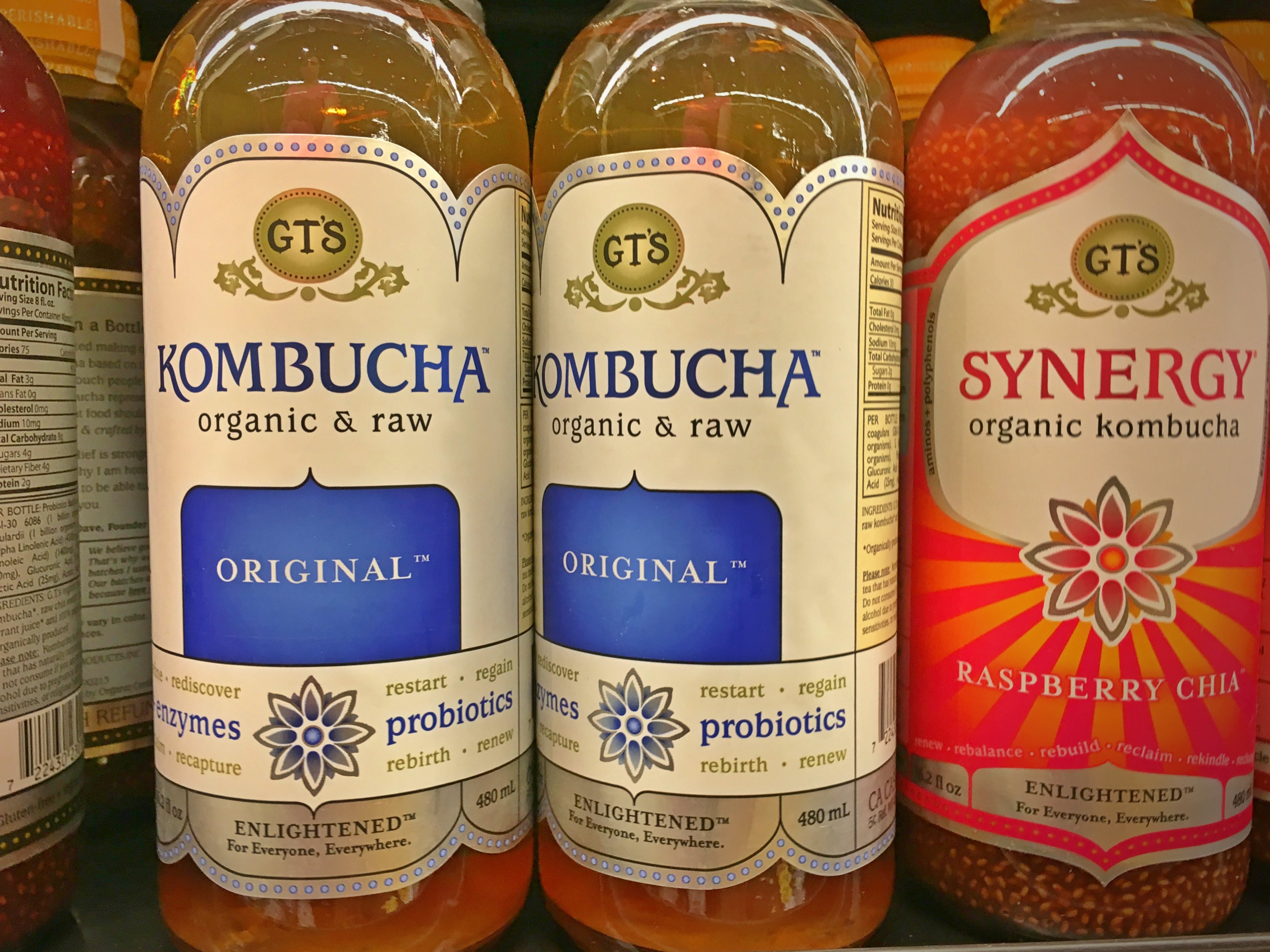
If you like kombucha, you can buy your last $3.50 store bought bottle and start brewing your own with items you likely already have at your house. You'll have a delicious drink in a few week's time, and may even notice some of the many health benefits that kombucha has to offer. What's to lose? Dive in!
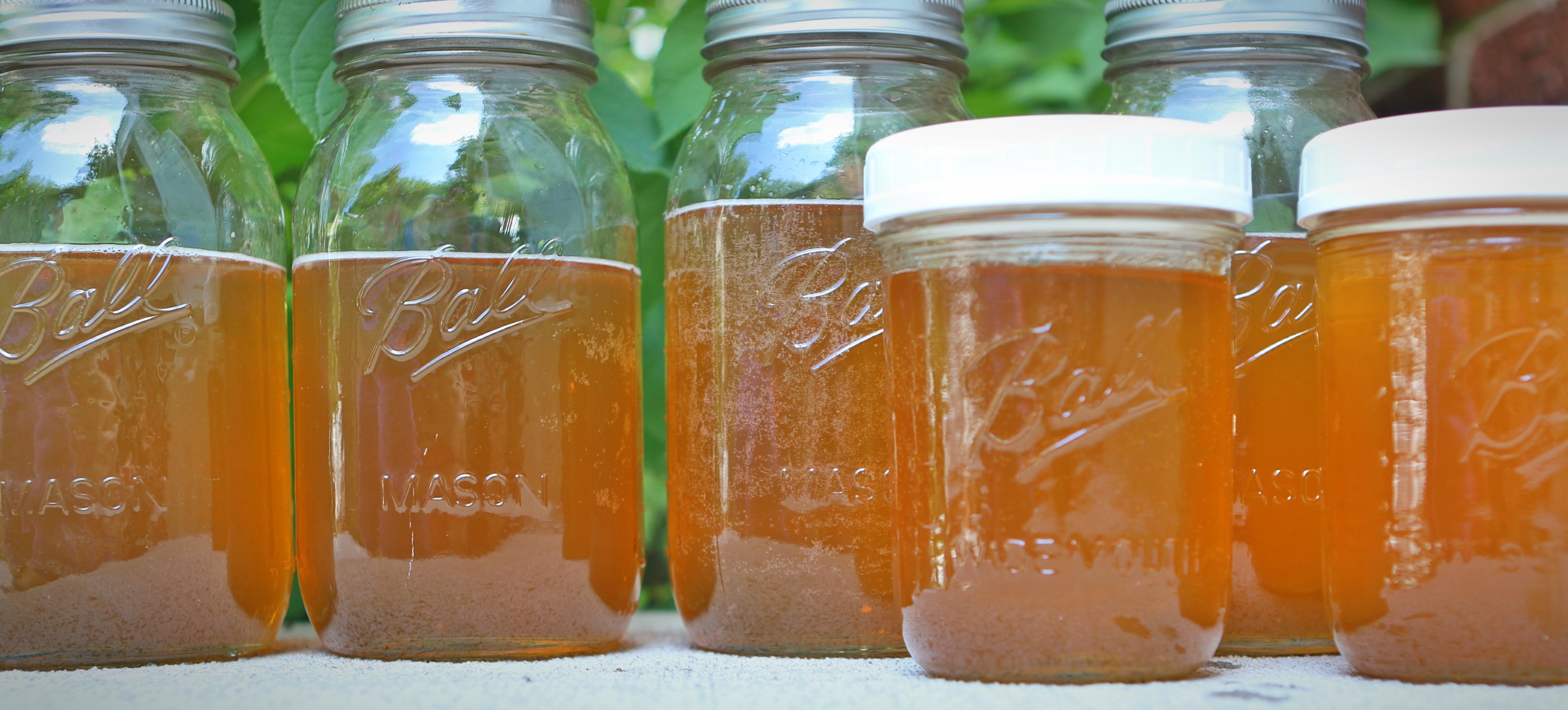
Thanks for reading! If you enjoyed this post, check out my blog!
All content and photos by @jaymorebeet unless source is listed, taken in July 2017 using a Canon EOS 7D MarkII. Store kombucha photos taken with an iPhone6s.
